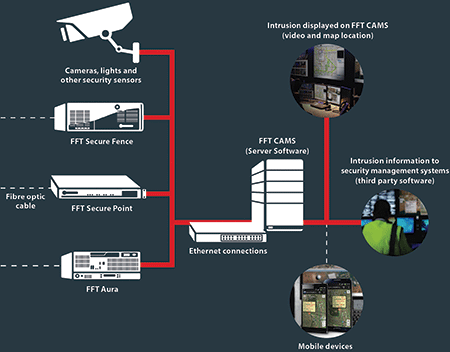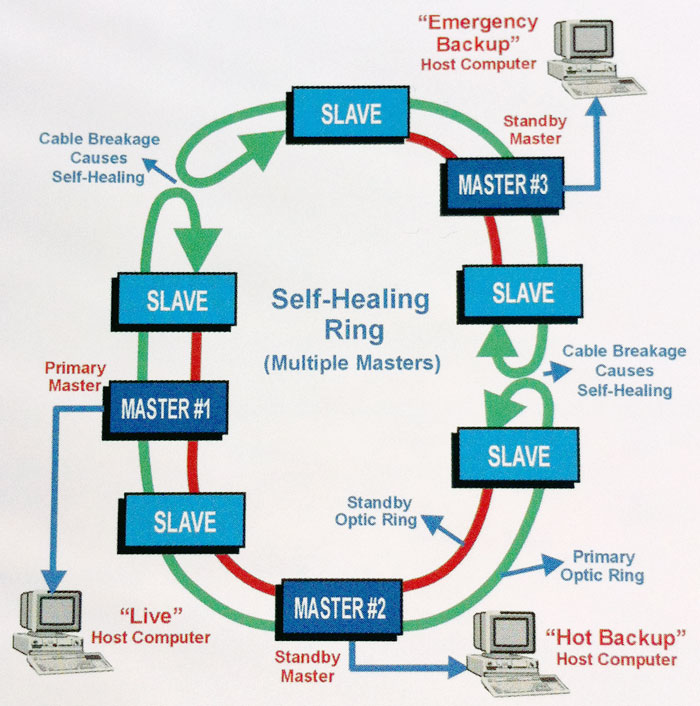Why Fiber Optic Protection Equipments Are the Future of Protection
The shift to fiber optic safety systems notes a considerable development in the world of defense, driven by their phenomenal data transmission capabilities and strength to external disturbances. These systems not just assist in faster and a lot more reliable communication yet also provide a cost-effective solution with minimized maintenance needs. As the landscape of safety and security advances alongside arising innovations such as AI and IoT, the capacity for fiber optics to improve and redefine protection facilities ends up being significantly apparent. Nonetheless, the effects of these improvements raise essential inquiries concerning the future of security steps and their efficiency in an ever-changing atmosphere.
Advantages of Fiber Optic Systems
Among the key benefits of fiber optic systems is their remarkable bandwidth capacity, which facilitates the transmission of big quantities of information over fars away without substantial loss. This particular is particularly helpful for safety and security applications that need the continual tracking and transfer of high-def video clip feeds, sensing unit data, and other crucial information. Optical fiber can accommodate the expanding needs of modern safety and security systems, making sure that data stays intact and dependable.
Additionally, fiber optic cables are less prone to electromagnetic interference, which can be a substantial concern in environments with different electronic tools. This resistance boosts the integrity of the information being sent, therefore decreasing the threat of data violations or system failures. Additionally, fiber optic systems are inherently more protected than standard copper wires, as tapping right into a fiber optic line without detection is exceedingly difficult.
The longevity of fiber optic cords additionally adds to their allure. They are immune to environmental variables such as wetness and temperature variations, minimizing maintenance prices and increasing system longevity. Generally, these benefits position fiber optic systems as a durable and efficient choice for modern-day security frameworks, guaranteeing reliable and secure data transmission.
Improved Data Transmission Speed

The ability to send vast amounts of data promptly helps with the seamless integration of high-definition video feeds and progressed analytics. Protection systems can now process and examine info in real-time, improving reaction times and situational awareness. In addition, fiber optic connections support longer transmission distances without destruction of signal quality, making them perfect for extensive safety networks.
The increased rate of fiber optic systems not only improves the performance of safety procedures yet likewise reduces latency. This is particularly important in essential circumstances where prompt decision-making can stop safety and security breaches or mitigate potential threats. As organizations remain to prioritize security and effectiveness, the demand for rapid and trustworthy information transmission will definitely strengthen fiber optic systems as a foundation of modern safety and security infrastructure.
Resistance to Interference
Fiber optic protection systems consistently demonstrate remarkable resistance to electromagnetic interference, an essential advantage in settings susceptible to digital sound. Unlike traditional copper cable televisions, which can be adversely impacted by magnetic fields, superhigh frequency interference, and various other forms of electrical disruption, fiber optic wires utilize light to transmit data. This inherent property guarantees that the signals stay clear and unchanged, despite bordering digital activity.
The usage of glass or plastic fibers in fiber optic modern technology creates an obstacle against interference, enabling for reliable information transmission even in challenging situations such as commercial facilities, urban locations with high digital website traffic, or areas near radio towers. This particular dramatically decreases the possibility of signal degradation or loss, making fiber optic systems especially appropriate for security applications where honesty and accuracy of information are critical.
Moreover, this resistance to interference enhances the overall efficiency and dependability of security systems, making certain that check my source tracking and alert systems work perfectly. In a world where protection is significantly threatened by advanced modern technologies, the durability of fiber optic systems stands apart as a crucial function, enhancing their status as a crucial element of modern security infrastructure.
Cost-Effectiveness In Time
Considerable price financial savings can be achieved gradually with the application of fiber optic safety systems. While the first financial investment might seem greater contrasted to traditional copper-based systems, the long-term financial advantages emerge through reduced operational and maintenance costs (fiber security). Fiber optic cable televisions are inherently a lot more durable and less prone to environmental factors, which equates to decrease substitute and repair work expenses over their life expectancy
Additionally, fiber optic systems need less power to run, which better reduces power expenses. Boosted information transmission capacities permit fewer repeaters and amplifiers, lessening devices financial investment and streamlining installation procedures. The scalability of these systems additionally adds to cost-effectiveness, as companies can increase their safety facilities navigate to this website without incurring significant added costs.
One more factor to consider is the enhanced performance in surveillance and reaction capacities that optical fiber supply. Improved real-time data transmission can result in quicker incident response times, possibly mitigating losses and liabilities connected with protection violations. Altogether, the lasting benefits of fiber optic protection systems not just validate the first expenditure but also position them as a financially sensible choice for organizations seeking robust defense options.

Future Developments in Safety And Security
Progressing modern technologies are readied to reinvent safety systems, incorporating artificial knowledge (AI) and maker discovering to improve threat detection and response abilities. These advancements will certainly allow protection systems to assess vast quantities of data in real-time, determining patterns and anomalies that indicate potential threats. This proactive approach will enable faster decision-making and more reliable incident reactions.
Furthermore, the incorporation of the Web of Points (IoT) is leading the way for interconnected safety devices, next page supplying detailed surveillance and tracking. Smart sensors can relay info concerning ecological changes, while automated signals can inform security workers immediately of dubious activities.
Additionally, the development of biometric technologies will additionally boost protection mechanisms. Face acknowledgment, fingerprint scanning, and retina recognition are coming to be extra innovative, giving layers of verification that are hard to bypass.
Conclusion
Finally, fiber optic safety systems represent a significant advancement in security technology, using unrivaled information transmission rate, resistance to electromagnetic interference, and long-lasting cost-effectiveness. As the need for advanced safety and security services proceeds to expand, the combination of optical fiber with arising innovations such as AI, IoT, and biometrics will even more enhance protection facilities (fiber security). The mix of these technologies will certainly ensure a more safe and secure and responsive environment, solidifying optical fiber as a foundation of future security systems